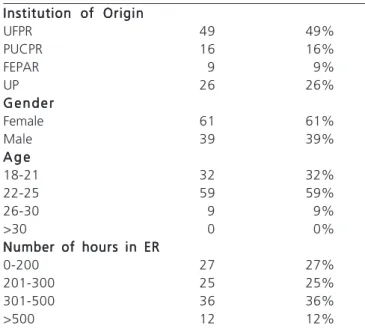Rev. Col. Bras. Cir. vol.40 número4 en v40n4a06
Texto
Imagem


Documentos relacionados
carried out a study involving 1,040 victims of blunt trauma and identified the following independent factors significantly associated with the presence of abdominal
We present the experience of the Wound Center of the Plastic Surgery Service, Clinics Hospital, Faculty of Medicine, University of São Paulo (HC - USP) for the last two years in
parameters were analyzed: age, gender, cause of injury, systolic blood pressure (SBP), Glasgow Coma Scale (GCS) Revised Trauma Score (RTS), presence of associated abdo- minal
Conclusion Conclusion Conclusion Conclusion Conclusion: Nonoperative treatment of grade IV splenic injuries in blunt abdominal trauma is safe when a rigid protocol is followed..
In penetrating trauma by stab wounds, 51-77% of patients with renal injury can be addressed without surgery, since the inclusion criteria of the protocol are followed.. However,
The difficult understanding of patients regarding discharge guidance is consistent with the results obtained in this study, as the average household guidelines of both the group
and Doig (2005) demonstrated that the survival of critically ill patients (including trauma victims) was higher in patients undergoing early PNT versus late ENT (OR 0.29, 95%
The present review included three up-to-date studies on selective nonoperative management of renal trau- ma addressing issues such as the impact of the AAST gra- de IV renal